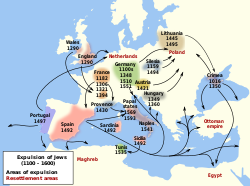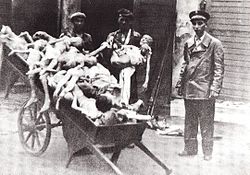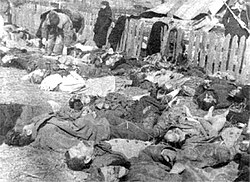This article has multiple issues. Please help improve it or discuss these issues on the talk page . (Learn how and when to remove these messages)
|
This article lists incidents that have been termed ethnic cleansing by some academic or legal experts. Not all experts agree on every case, particularly since there are a variety of definitions of the term ethnic cleansing. Definitions cluster around the forced removal of all or a large number of an ethnic population from an area, or rendering an area ethnically homogenous. See the main article for further information. When claims of ethnic cleansing are made by non-experts (e.g. journalists or politicians) they are noted.
Contents
- Ancient, Medieval and Early Modern periods
- Antiquity
- Medieval period
- Early modern period
- 19th century
- 20th century
- 1900s–1910s
- 1920s–1930s
- 1940s
- 1950s
- 1960s
- 1970s
- 1980s
- 1990s
- 21st century
- 2000s
- 2010s
- 2020s
- See also
- References
- Further reading
There is significant scholarly disagreement around the definition of ethnic cleansing and which events fall under this classification. [1]


























